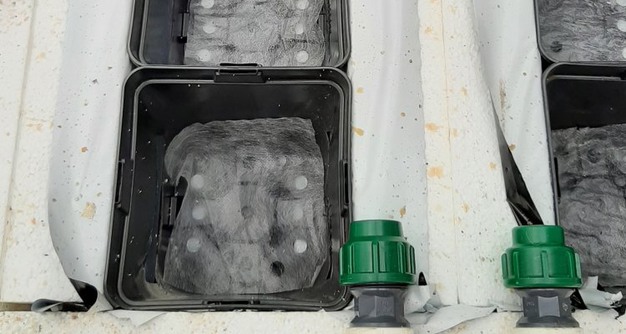Freesias are grown in the soil. The advantage is that this makes it easier to control the temperature of the tuber, cool in the summer and 'warm' in the winter. The soil mass provides a dampening effect when it comes to temperature. However, there is also a major disadvantage: the soil must be steamed every six months for disinfection. This is an energy and labor-intensive activity. The Greenhouse Horticulture and Flower Bulbs Business Unit of Wageningen University & Research is therefore investigating alternatives for growing in soil and steaming.

Soil has a dampening effect on the temperature because of the large volume concerned, including the subsoil. However, that large volume also needs to be disinfected after half a year of cultivation. The ideal alternative, therefore, has a smaller volume but still has a sufficient damping effect. To this end, WUR is investigating four alternatives in a demonstration trial. The freesias (two different varieties) were planted in November 2022.
Four alternatives
One of the alternatives is a floating cultivation system. The advantage of this is that the temperature of the water layer in which the plants float can be quickly adjusted. Moreover, cleaning is straightforward.
In the second alternative, the freesias grow in V-shaped cultivation gutters dug into the soil. The substrate in the gutters uses the damping effect of the surrounding soil. In addition, mechanical cooling is possible through a cooling hose outside the gutter: if that is insufficient, a cooling hose inside the gutter can also be used.
The third alternative entails containers made of thermoplastic polymer (polystyrene), which are partially dug into the soil. The polystyrene should provide insulation and dampen the tuber temperature. The containers contain pots of approximately 4 liters, filled with a substrate mixture in which the freesias grow. The substrate in the containers can be cooled using a cooling hose placed against the containers.
The fourth alternative entails elongated containers in which strawberries are sometimes also grown: here, a cooling hose is placed on the dug-in containers.
With all alternatives, considerably less soil/substrate needs to be disinfected after a crop cycle. Whether the cooling effect is sufficient will become apparent next summer with the second crop. In a subsequent study, possibilities for automation can also be examined: after all, some alternatives allow for a more flexible cultivation system. This makes it possible for the freesias to sprout in an easy-to-condition room, after which the freesias can be moved to the greenhouse to grow and blossom before being harvested.
The research into cultivation systems in freesia is financed by the 'Kas als Energiebron' program.
Source: wur.nl
